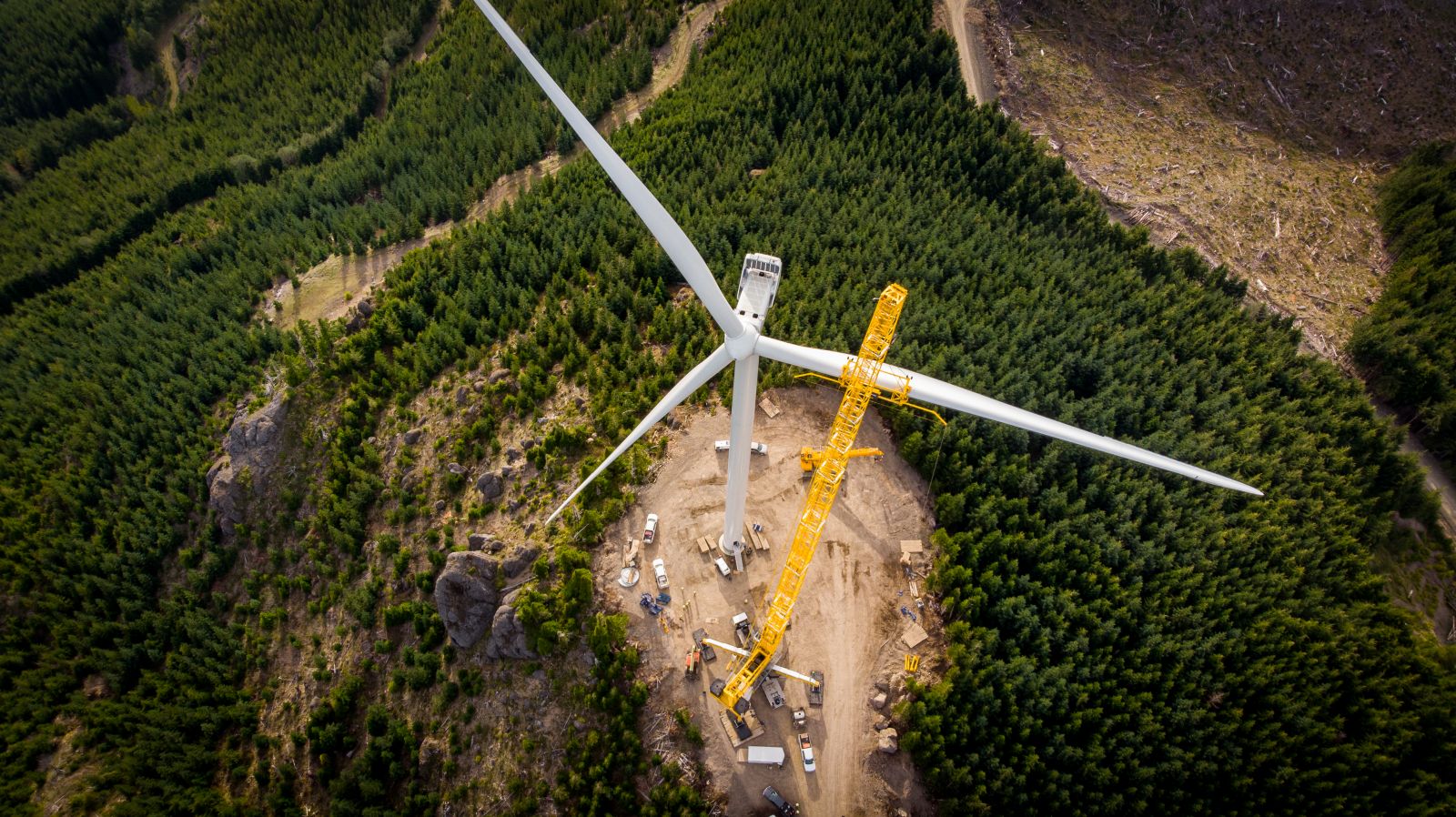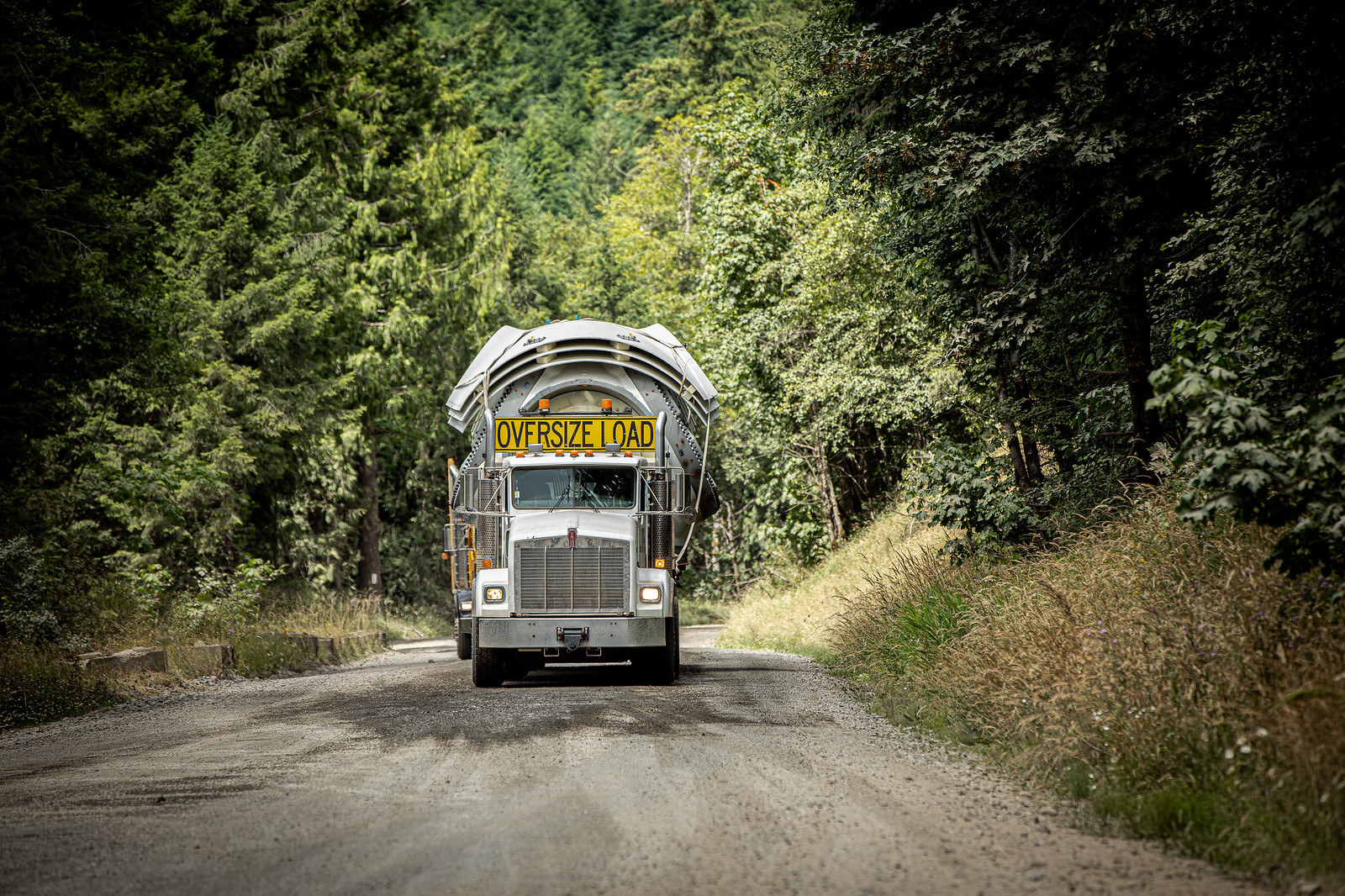Winding Our Way Up a Mountainside
 Ridgeline Wind was a project like no other our team had ever encountered. Erecting wind turbines on flat terrain and hills is one thing, but there was a reason the project was named "Ridgeline" - this job was literally on the side of a mountain that had no roads. The number one obstacle in those early stages of planning was the steep terrain; not only did roads have to be built, but they had to be able to handle massive equipment. And they had to hold up in every weather element you can imagine.
Ridgeline Wind was a project like no other our team had ever encountered. Erecting wind turbines on flat terrain and hills is one thing, but there was a reason the project was named "Ridgeline" - this job was literally on the side of a mountain that had no roads. The number one obstacle in those early stages of planning was the steep terrain; not only did roads have to be built, but they had to be able to handle massive equipment. And they had to hold up in every weather element you can imagine.
Our team was up for the challenge. Working closely with the customer, we went to work in the spring of 2019. The engineers, wind experts, and heavy haul teams had to make several trips to the site just to plan and evaluate what would be needed. Civil teams were brought in to create the roadways to each potential turbine site. Because of the conditions, many of the roads could only be one lane, which involved another element of planning: alternate routes. Not only would these provide a traffic solution, but they would also allow us to work through weather issues on a certain roadway. Simply maintaining the roads and the equipment was a daily process that lasted throughout the project; mixing heavy machinery with rocky roads meant both the equipment and roads took a beating! Our full-time maintenance crew spent a good majority of their time replacing tires on the massive equipment. 15 to 20 blown tires per day can halt a job in its tracks, and put a real damper on progress. One day, while making the trek to T-13, the transmission on one semi gave out about seven miles into the climb up the mountain. In order to recover the downed semi, the team had to carefully disconnect the truck from the trailer (without incident or injury) and continue the load to T-13. Getting the unit off the mountain without power was a huge safety concern. Using winches and taking advantage of the steep grade helped us get the truck on one of our M1000 trailers to get it off the mountain and to our mechanic. Fortunately, a new tractor was brought up the mountain to take its place, so it didn't slow the progress of the project.
One of the biggest variables on any construction site is the weather, and it was no different for our situation. Even in ideal weather conditions, the steep slopes and soft shoulders of the roads posed a real danger. Once conditions became muddy and slippery, staying in the middle of those one-lane roads was absolutely critical. The mountain elevation created intense fog, which, combined with the dust, could quickly turn into a zero-visibility situation. One potentially lifesaving and oft repeated rule included, "if you can't see your trailer... STOP!"
.jpg)
Working in the Pacific Northwest meant battling every type of weather, from extreme heat and torrential rain to fog and whiteout snow conditions. Monitoring the forecasted weather was an important aspect of the job. When extreme weather posed a safety risk for certain tasks, we had to plan ahead to advance the project and keep crews busy with other items. While stacking one of the first towers on the job, we had a small wind window to get the top stacked on the can. After that, high winds came in and we couldn't set the nacelle. Meanwhile, the sleet and snow blew in to where we had over 3 inches of ice built up on the boom. The data logger clocked the high winds at 90 miles per hour. Ultimately, we had to leave the crane tied off the top section for 8 days. We made sure to observe all safety precautions in inspecting the crane and rigging to ensure that it was ready to perform the rest of the work.
We couldn't have worked in these conditions without the right equipment: there's nothing like seeing a caravan of massive wind components climbing a mountain. Watching the M1070 tuggers, rock trucks, semis, and goldhofer trailers carefully take the turns and successfully summit the mountain was extremely gratifying. Not only did the team exercise extreme caution, but - let's be honest - it took major guts and grit to climb those mountains day in and day out. Using the blade lifter was an amazing sight - it raises the blade vertically so it can climb the slope and take the tight turns. Watching its progress, you couldn't help but hear the Jaws theme running through your head as you saw a white "fin" poking up through the trees and moving slowly toward you!
Using the blade lifter was an amazing sight - it raises the blade vertically so it can climb the slope and take the tight turns. Watching its progress, you couldn't help but hear the Jaws theme running through your head as you saw a white "fin" poking up through the trees and moving slowly toward you!
In the end, working closely with our customer, 38 turbines were constructed from the ground up. There is no question the crew became a tight knit group after the daily challenges and risks encountered together.
Bringing your whole crew safety home and providing an excellent product for your customer after completing a job of this scope is incredibly gratifying.
SAFETY STRONG!
Tyler Poulsen is a project manager for Mountain Crane. After 16 years in general construction, Tyler joined the Mountain team in 2012. With a high safety standard and a focus on long term special projects, Tyler played a key role in the success of the Ridgeline Wind Project.
Mountain Crane | www.mountaincrane.com
Author: Tyler Poulsen
Volume: 2021 May/June








